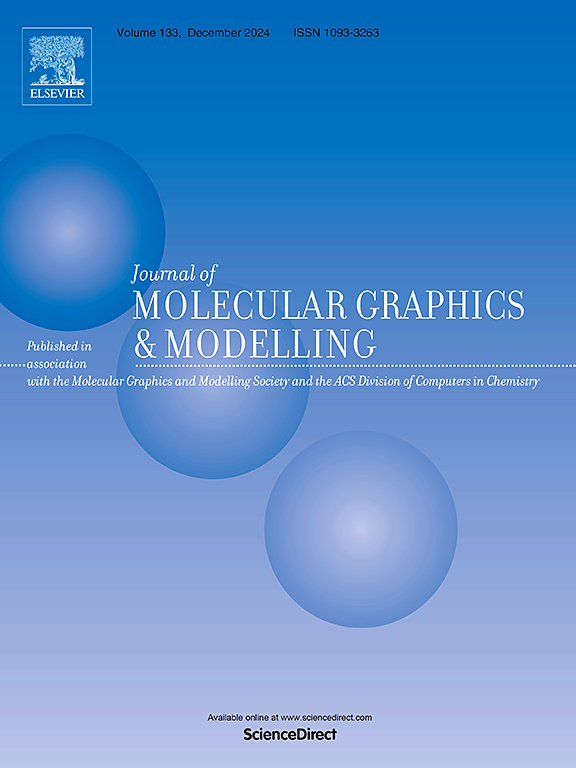Exploring vacancy defects in s-I clathrate hydrates
IF 2.7
4区 生物学
Q2 BIOCHEMICAL RESEARCH METHODS
引用次数: 0
Abstract
This study investigates the role of vacancy defects in s-I clathrate hydrate structures, particularly in the presence of ethylene oxide (EO) molecules, through first-principles calculations. The structural properties, formation energies, and guest-host interactions of these vacancy defects were examined in both periodic systems and finite-size clusters. Our findings demonstrate that EO molecules significantly stabilize vacancy defects via hydrogen bonding, especially when forming double hydrogen bonds with dangling hydrogens (d-Hs) arising from the molecular vacancy defect. The encapsulation of EO in defect-free cages and its interaction with dangling oxygens (d-Os) were also analyzed, highlighting the superior stabilizing effect of double hydrogen bonds. These results provide new insights into the behavior of vacancy defects in hydrate structures and the potential role of polar guest molecules in enhancing defect stability and facilitating hydrate formation processes.

求助全文
约1分钟内获得全文
求助全文
来源期刊

Journal of molecular graphics & modelling
生物-计算机:跨学科应用
CiteScore
5.50
自引率
6.90%
发文量
216
审稿时长
35 days
期刊介绍:
The Journal of Molecular Graphics and Modelling is devoted to the publication of papers on the uses of computers in theoretical investigations of molecular structure, function, interaction, and design. The scope of the journal includes all aspects of molecular modeling and computational chemistry, including, for instance, the study of molecular shape and properties, molecular simulations, protein and polymer engineering, drug design, materials design, structure-activity and structure-property relationships, database mining, and compound library design.
As a primary research journal, JMGM seeks to bring new knowledge to the attention of our readers. As such, submissions to the journal need to not only report results, but must draw conclusions and explore implications of the work presented. Authors are strongly encouraged to bear this in mind when preparing manuscripts. Routine applications of standard modelling approaches, providing only very limited new scientific insight, will not meet our criteria for publication. Reproducibility of reported calculations is an important issue. Wherever possible, we urge authors to enhance their papers with Supplementary Data, for example, in QSAR studies machine-readable versions of molecular datasets or in the development of new force-field parameters versions of the topology and force field parameter files. Routine applications of existing methods that do not lead to genuinely new insight will not be considered.
 求助内容:
求助内容: 应助结果提醒方式:
应助结果提醒方式:


